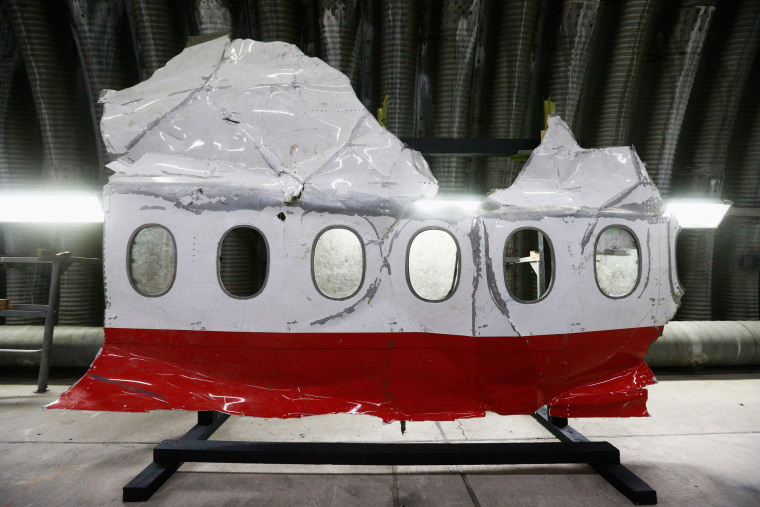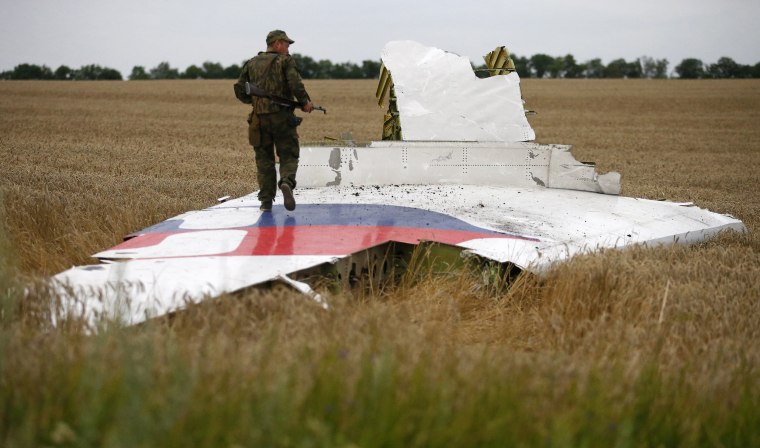Harrowing details of the final moments of Malaysia Airlines Flight 17 were revealed Tuesday as part of investigators' final report into the tragedy. The Dutch Safety Board, which led the investigation, concluded the aircraft was brought down by a Russian-made BUK missile system.
The pilots were killed instantly
The 298 passengers and crew aboard MH17 had no warning that their so-far uneventful flight was about to turn into one of the worst air disasters for almost 20 years.
The warhead — launched 33,000 feet below in the Ukrainian countryside — exploded less than one yard from the aircraft's cockpit, the Dutch report said.
A split-second later, hundreds of "high-energy" fragments pierced the fuselage and the shrapnel instantly killed the two pilots and one crew member inside.
There was no mayday call or attempt to maneuver, the report noted. The cockpit voice recorder stopped abruptly at the point of impact.

The plane flew five miles without its cockpit
The explosion also caused the cockpit to instantly separate from the rest of the aircraft. After that "instantaneous separation," the rest of the plane continued to fly for more than five miles before breaking into further pieces, according to the report.
The center part of the airliner traveled beyond the rear section and came to rest upside down after hitting the ground. "Parts of the wreckage caught fire," the report added.
Investigators estimated it took the center and rear parts of the airplane 60 to 90 seconds to reach the ground after the blast. "Other, lighter parts would have taken longer," the report said.
The debris field was more than 20 square miles.
The passengers' final moments
After the blast and the cockpit's separation from the rest of the plane, the report said the passengers and remaining crew members would have been exposed to some extreme conditions inside the cabin.
These would have included: the aircraft abruptly changing speed, oxygen decreasing, extreme cold and air rushing through the cabin, objects flying around and a "very rapid descent."
Some people suffered "probably fatal" injuries and others would have had little idea what was going on, experiencing "reduced awareness or unconsciousness within a very short time," the report said.
Gallery: Malaysia Airlines Wreckage Litters Ukrainian Landscape
Investigators found no evidence that the passengers or crew performed "conscious actions" after the missile's detonation, saying it was likely they were "barely able to comprehend the situation in which they found themselves."
However, the aircraft's oxygen masks did deploy, according to the report.
"It was not possible to ascertain at which moment the occupants died," it added. "The impact on the ground was not survivable."

Investigators used paint to trace the missile
Ukraine and its Western allies have long alleged that pro-Russian rebels fighting in eastern Ukraine brought down MH17 using a Russian-made missile system — a claim Moscow staunchly denies. While Tuesday's report apportioned no blame, it was the first confirmation that the airliner was shot down using the BUK missile launcher — a Russian-made system.
Investigators came to this conclusion by analyzing a number of minute details.
A 2.3-millisecond noise was recorded on the cockpit's voice recorders before the system stopped working. By triangulating the signal, experts were able to show that it originated outside the aircraft.
Their conclusion was also based on "bow-tie"-shaped fragments found inside the bodies of the flight's crew members that were consistent with a 9N314M missile launched as part of the BUK system.
The Dutch team that compiled the report also based this conclusion on "explosive residues and paint" that were found on some of the fragments.
